![]()
![]()
![]()
Use LEFT and RIGHT arrow keys to navigate between flashcards;
Use UP and DOWN arrow keys to flip the card;
H to show hint;
A reads text to speech;
57 Cards in this Set
- Front
- Back
|
Enrichment |
“…the provision of environmental stimuli that increase opportunities for species-typical behaviors with the intention of enhancing animal’s physical and psychological well-being”
|
|
|
SPIDER |
Setting goals Planning Implementing Documentation Evaluation Re-adjusting |
|
|
Benefits of enrichment |
Improves the zoo visitor experience
Raises the level of care and the over-all well being of the animal Reduces unwanted behaviors from the animal Increases species specific behaviors such as: foraging, self-maintenance (grooming),displaying, or nesting |
|
|
Factors to Consider Before Restraint |
1. Safety of the people involved
2. Safety of the animals involved (what is the need?) 3. Is the chosen technique appropriate, will it work? 4. Can the animal(s) be given constant observation and attention following restraint until full recovery? |
|
|
Tools of Restraint |
Psychology
Diminishing Senses Confinement Arm Extenders Barriers Physical Force Chemical Restraint Special Techniques |
|
|
Imbolization |
Used for more invasive procedures,longer time needed, larger or moredangerous animals.
|
|
|
Hand Restraint |
Manually restraining the animalvia physical force. Typically used on smaller animals.
|
|
|
What to Consider When Restraining |
Environmental Considerations
Behavioral Aspects Hierarchical Status Health Territory |
|
|
Enviromental considerations when restraining |
Weather Season Hyperthermia Hypothermia Direct sunlight Avoid humidity levels 70-90% Photoperiod |
|
|
Capture Myopathy |
This syndrome often develops afterrestraint of wild animals. Affectedanimals may die acutely from lacticacidosis or may live several days andshow muscular stiffness or becomerecumbent. Severe skeletal musclelesions with myocardial necrosisand myoglobinuric nephrosis maybe present. Careful handling andreduction of stress are useful; IVfluids and sodium bicarbonate mayhelp.
|
|
|
Capture Myopathy |
There are no treatments. |
|
|
Planning stage of restraining |
Choose your technique, what kind of a capture arewe going to perform?
Is it safe? Is there time and people available for the entireprocedure? Plan out the procedure and what roles will be needed |
|
|
Roles and prep work for restraining |
Decide who is needed, and how may people is to few or to many?
Ask for help if needed. Assign roles and back-ups where possible. Who is leading the procedure or are there teams? Assign and define any prep work that will need to be done prior to the procedure. |
|
|
Location of restraint |
Set time, date and location for the procedure.
Weather? Meeting location for those involved?Point person for communications prior to? |
|
|
Equipment for restraining |
Equipment, decide on what equipment will be needed.
Vehicles, tools, radios, traffic areas, safety gear, restraint devices, emergency kits, etc. Prior to procedure make sure that all necessary equipment is functional. |
|
|
Day before restraining |
Prep the location ahead of time.
Inform everyone necessary of the planned procedure. Remind them the day before and the day of. |
|
|
FOOD ID |
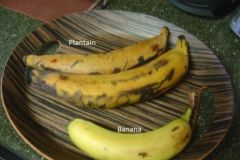
Banana is smaller Plantains have thicker skin |
|
|
FOOD ID |
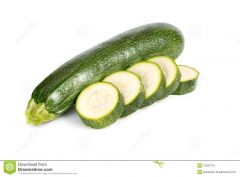
Zucchini |
|
|
FOOD ID |
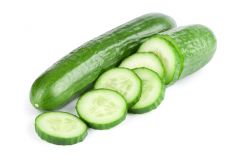
Cucumber |
|
|
FOOD ID |
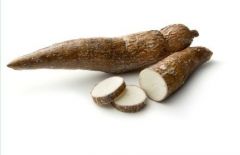
Yucca |
|
|
FOOD ID |

Sweet potato |
|
|
FOOD ID |
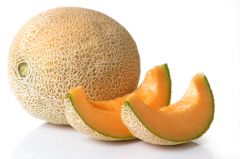
Cantaloupe |
|
|
FOOD ID |
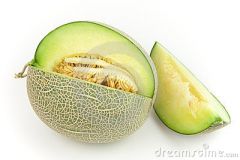
Melon |
|
|
FOOD ID |
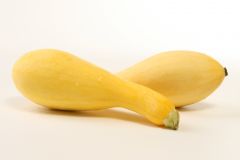
Yellow squash |
|
|
FOOD ID |
Adult rat=8 inches Adult mouse=4 inches Pink rat=2 inches Pink mouse=1 inch |
|
|
FOOD ID |
Rats: Mouse: Large Adult Medium Small Small Hopper Pink Fuzzy Pink |
|
|
Exhibit inspection (Records) |
•Complete all sections of the records •Legible •Make sense •Record all of the relevant material •Signed out diet in kitchen |
|
|
Exhibit inspection (Cleanliness) |
•Old food removed (ground, feed stations…•Feces removed (ground, props, walls, etc.)
•Spider webs removed (Where appropriate) •Debris removed from roof and walls •Algae removed from structures •Mulch in appropriate places •Tools, hoses and equipment is clean andmaintained •Clean towels/linens |
|
|
Exhibit inspection (Safety keeper) |
•No Trip Hazards
•Keeper Paths clear •Tools, chemical stored appropriately •No hanging branches or limbs •No nails, broken boards, etc. |
|
|
Exhibit inspection (Safety animal) |
•No foreign objects within reach
•No toxic plants, inside exhibit or within reach .•No branches hanging overhead •Enclosure barriers complete and secure •No standing water •Props are in good shape, not rotting, nohardware sticking out •Inappropriate locations (shift doors appropriate) |
|
|
Exhibit inspection (Safety public) |
•No equipment within reach
•No branches hanging overhead •No plants which can hit, scratch, attack guests •No standing water in public areas •No holes in public areas •No issues with the trail fences •No bees or wasps |
|
|
Exhibit inspection (Food and water) |
•Is water available, do the animals haveaccess to it
•Is the water container clean •Is food available per instructions, do theanimals have access to it? •Browse is appropriate |
|
|
Exhibit inspection (surrounding area) |
• Sign is clean, legible, straight
• Donor signs clean • Cobwebs are taken down • View from the public perspective is clean and neat • All limbs/fallen branches removed in the entire zone • Trail mulch •Is thick enough in front of enclosure (not bare) •Is not built up under the trail fence •Double gates into zone are not built up with trail mulch • Trail fence •Clear of plant material •Border grass is clear of material •Secure, not fraying, etc. |
|
|
Exhibit inspection (Enrichment) |
•Appropriate enrichment is provided
•Enrichment safely applied •Enrichment and reaction is recordedcorrectly |
|
|
Exhibit inspection (locks and latches) |
•Locks and latches are secured appropriately
•Locks are functioning appropriately •Not sticking •Not dirty •Will lock without the key •Lock mechanisms line up correctly |
|
|
5 step cleaning method |
1. Pick up all waste (old food, browse, feces, leaves)
2. Spray everything down with water to remove the leftover particles. Start from the top and work down then move farthest from the drain to closest to the drain. 3. Apply detergent to all surfaces 4. Scrub surface with appropriate tool to free all remaining organic material 5. Rinse material and detergent away. |
|
|
Additional 3 steps for cleaning |
Disinfect only on assigned days.
Complete the standard cleaning method first. Everything should still be wet. 1. Apply a liberal coat of disinfectant. 2. Let stand for at least 10 minutes. 3. Thoroughly rinse, pay close attention to food, water andbedding contact areas. |
|
|
Detergents: |
Green works (used at sinks) Simple Green (used in exhibits) |
|
|
Cleaners |
Vinegar (used on clear surfaces such as windows) Ammonia |
|
|
Disinfection/Sanitizers |
Sani-q- used in kitchen sink Simple green D Pro 5- used in exhibits Nolvasan- Blue, used in animal procedures Bleach |
|
|
Where are chemicals? |
Chemicals used in exhibits are found on slab Spray bottles refilled in kitchen Chemicals used at sinks are found at various sinks Vinegar bottles are found at herp, or ocelots |
|
|
Cleaning bowls on Slab |
Station 1-empty debri Station 2-rinse Station 3-Scrub bowls Station 4-Rinse Station 5-Drain |
|
|
SID |
Once per day |
|
|
BID |
2x a day |
|
|
TID |
3x a day |
|
|
QID |
4x a day` |
|
|
QOD |
every other day |
|
|
PRN |
as needed |
|
|
PO |
Orally |
|
|
IV |
injected intravenously, injected into vein |
|
|
IM |
intramuscular-injected into muscle |
|
|
SQ (subq) |
subcutaneous injection-injected deep into the skin |
|
|
Types of syringes |
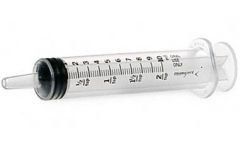
Oral |
|
|
Types of syringes |

Luer |
|
|
Vet rounds |
every other tuesday 8:30 am to 12 |
|
|
Annual Exams |
Blood work
Physical exam Urine analysis Dental Vaccines Verify micro chip Weigh |
|
|
Key Colors |
Blue = Birds2 sets – Birds1 and Birds2
Red = Education Green = Herp House Yellow = Mammals (C/H and Primates) Brown = Guest Experience or Gate Key |

